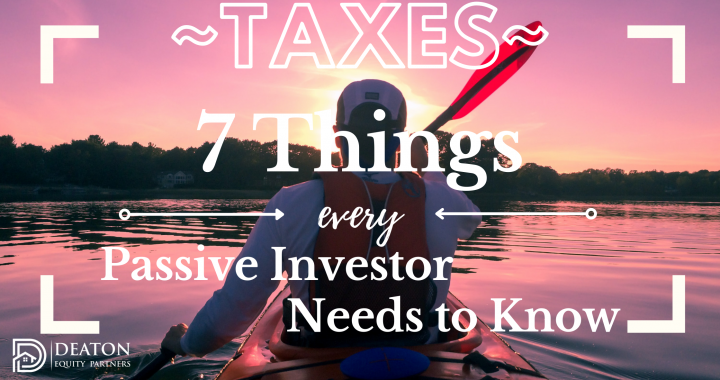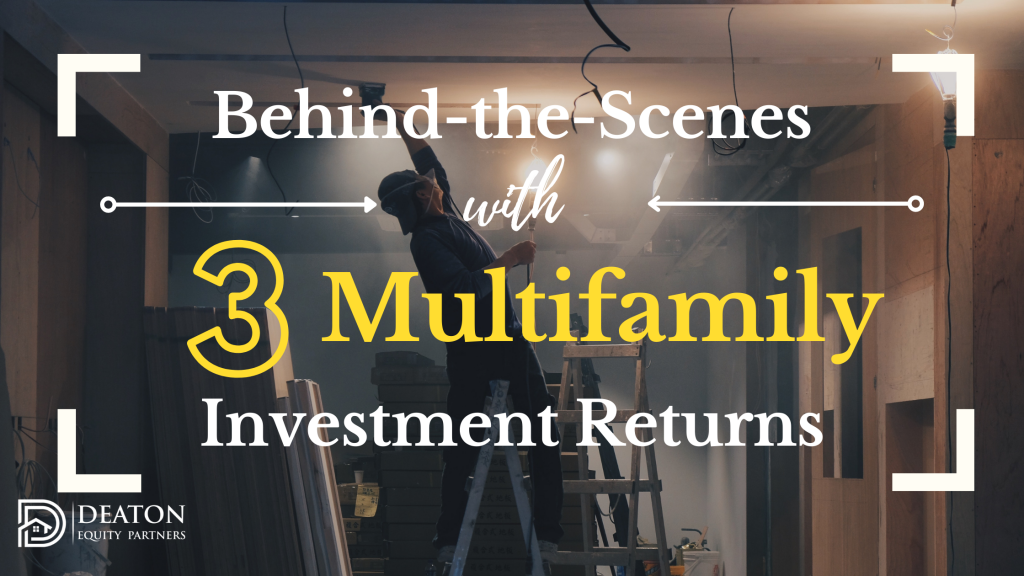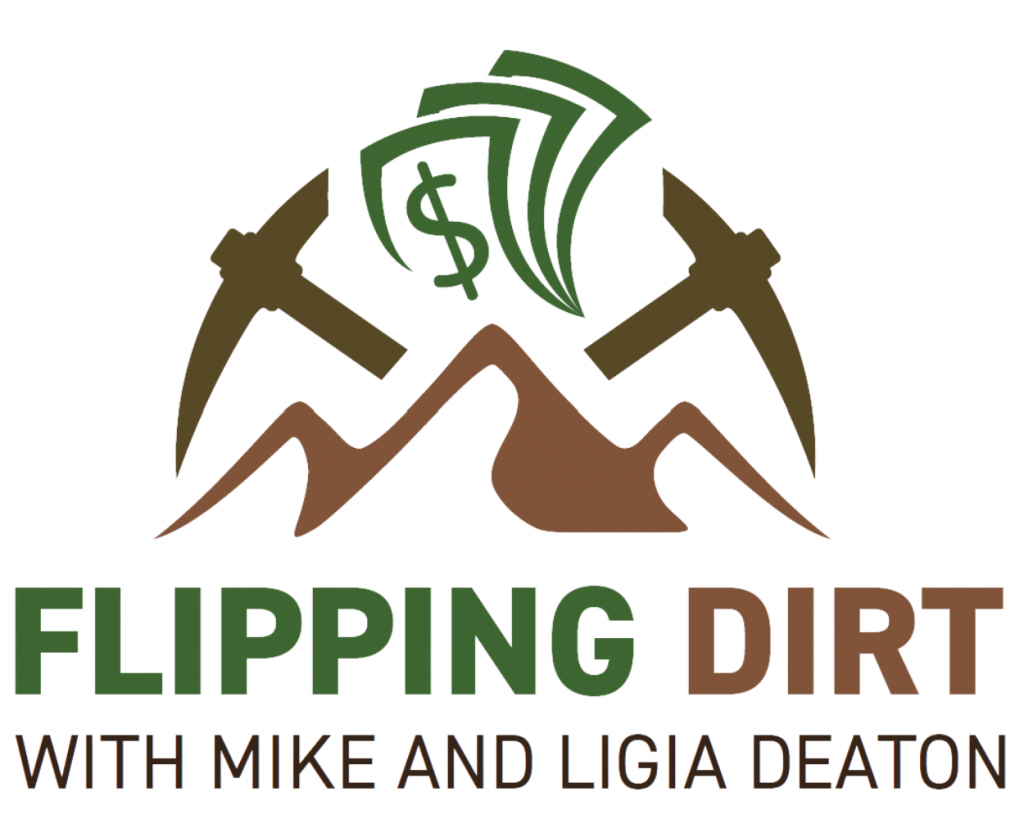Taxes & Syndications
7 Eye-Opening Things Every Passive Real Estate Investor Should Know
If you’re like me, well at least the OLD me, one of the last things you think about when making a new investment is taxes. It’s so much easier to think about all the potential luxury vacations you’ll take and the new cars you’ll buy, than to think about the taxes you’ll be paying.
Well, I’m here to tell you that, when you start out investing in real estate, it’s actually okay that taxes aren’t on your mind. That’s because, unlike when you invest in stocks and mutual funds, investing in real estate tends to make your tax bill lower, not higher.
Yes, you read that right. Investing in real estate can often help lower the amount of taxes you owe, even while you’re making great returns on your investment.
But how is that possible, you ask?
Investing in real estate can often help lower the amount of taxes you owe, even while you’re making great returns on your investment

There’s actually a HUGE difference between the way the IRS views stock market gains and the way they view real estate gains. And that’s exactly what we’ll discuss in this article, specifically from the standpoint of a passive investor in a real estate syndication.
But First, a Disclaimer
Just so you know, I am not a tax professional, nor will I ever seek to become one (those people have really tough jobs). As such, the insights and perspectives provided in this article come from my experience only.
** Always consult with your CPA for more details, and specifics on your exact situation.
Okay, now that that’s out of the way, let’s dive in.
The 7 Things You Should Know about Taxes and Real Estate Investing
Alright, get ready to have your mind blown (as much as the topic of taxes can blow your mind anyway).
Here are seven key concepts I think every passive investor in a real estate syndication should know about taxes:
- The tax code favors real estate investors.
- As a passive investor, you get all the same tax benefits an active investor gets.
- Depreciation is freaking powerful.
- Cost segregation is depreciation on steroids.
- Capital gains and depreciation recapture are things you should plan for.
- 1031 exchanges are amazing.
- Some people seek real estate investments solely for the tax benefits (like ME!).
Let’s dig in…
#1 – The tax code favors real estate investors
You may have heard that more people become millionaires through investing in real estate than through any other path. Well believe it or not, the tax code plays a big role in that.
Governments around the world recognized the power of using the tax code to shape and guide social direction. If you want more corn, subsidize corn. Fewer smokers…tax tobacco. Carrots and sticks.
One of the primary social needs that the US government wants more of is quality, affordable housing for its inhabitants. And the primary tool they encourage that is through awesome tax benefits for housing providers. As such, the tax code is written to reward real estate investors for investing in real estate, maintaining those properties, and even making upgrades over time (which I’ll explain more about in a moment).
So as a real estate investor, you’re like the IRS’s golden child and they want to reward you for it.
Hey, there are worse things.
#2 – As a passive investor, you get all the same tax benefits an active investor gets
This is a big deal. This means that, even though you’re not actively fixing any toilets, plugging leaks or climbing on any roofs, you still get full tax benefits, whether you’re an active or passive investor.
This is because, as a passive investor in a real estate syndication, you invest in an entity (typically an LLC or LP) that owns the property, and the entire entity is what’s known as a disregarded entity in the eyes of the IRS (sometimes also called “pass-through entities”).
What that means is any of the tax benefits flow right through that entity, to the members of the entity, which is you – the investors.
Note: This is different for investing in REITs. With a REIT, you are investing in a company, not directly in the underlying real estate, and hence you don’t get the same tax benefits.
Common tax benefits from investing in real estate include being able to write off expenses related to the property (including things like repairs, utilities, payroll, and interest), and the biggest benefit – being able to write off the value of the property over time (this is known as depreciation).
Let’s focus in on this beautiful thing called depreciation.
#3 – Depreciation is f-ing powerful!
Depreciation is one of the most powerful wealth building tools in real estate. Period.
Depreciation is the concept that ‘things’ wear down over time. The usage of items, like floors and doors and buildings, leads to wear and tear over time and a “theoretical” loss of value.
Imagine going to the car dealer and buying that brand new Lambo you’ve always wanted. You sit in the sales manager’s office and agree on the bargain price of $199,000. Wanting to show him what a hot-shot investor you are, you whip out your checkbook, sign your John Hancock, and with the flair of an orchestra conductor you rip off that check and hand it over in exchange for the keys to your new mid-life-crisis-mobile. Well after firing up all 12 cylinders and stalling the engine a couple of times, those tires screech off the lot and onto the pot-hole filled street. And now that those tires have hit the street, your $199,000 purchase is worth about $145,000 on resale – and that’s before any wear-and-tear! Depreciation baby!!
So Why the Heck is Depreciation So Magical?
Let’s use a simpler example relative to the world of business; so, let’s imagine you just bought a new laptop. On day one, that laptop works great – fast, powerful and bright. Over time, however, the keyboard gets sticky, the processor slows down, and the battery barely lasts more than a few minutes. Eventually, the whole thing will go kaput and this technological marvel will be worth very little, if anything. This is the essence of depreciation.
Essentially this is the same as with a multifamily property. The IRS is acknowledging that, if the property is used day in and day out, and if you do nothing to improve the property, that over time, the property will succumb to natural wear and tear, and at a certain point in the future, the property will become uninhabitable (just like when that laptop eventually dies).
As you can imagine, every “thing”, or asset, has a different lifespan. You wouldn’t expect a laptop to last more than a few years. On the flip side, you would expect a house to still be standing several years, or even decades, later.
For residential real estate, the IRS allows you to write off the value of the property over 27.5 years.
Note: Only the property itself is eligible for depreciation benefits, not the land. The IRS is smart enough to realize that the land will still be there in 27.5 years and will still be worth the same, or more.
Here’s an example:
Let’s say you purchased a property for $1,000,000. We determine the land is worth $175,000, and the building is worth $825,000.
With the most basic form of depreciation, known as straight-line depreciation, you can write off an equal amount of that $825,000 every year for 27.5 years. That means that each year, you can write off $30,000 due to depreciation ($30,000 x 27.5 years = $825,000).
The reason that this is such a big deal is this. Imagine in that first year that you make $5,000 in cash-on-cash returns (i.e., cash flow) on that property. Well, instead of paying taxes on that $5,000, you get to keep it, tax-free.
Wait. What? Really?
Yes, really.*
*Disclaimer: This depends on your individual tax situation. Please consult your CPA.
That $30,000 in depreciation means that, on paper at least, you lost money, while in reality, you made $5,000.
Plus, as an additional benefit, properties acquired after September 27, 2017, are eligible for what’s called bonus depreciation, which allow owners to stack up the majority of the depreciation costs into the first year, which can really amp up the tax benefits.
This is why depreciation is f-ing powerful!
#4 – Cost segregation is depreciation on steroids
But wait, there’s more!
In the last example, we talked about something called straight-line depreciation, which allows you write off an equal amount of the value of the asset every year for 27.5 years.
But, for most of the real estate syndications we invest in, the hold time is around just five years. So if we were to deduct an equal amount every year for 27.5 years, we’d only get five years of those benefits. We’d be leaving the remaining 22.5 years of depreciation benefits on the table.
This is where cost segregation comes in.
Cost segregation acknowledges the fact that not every asset in the property is created equal. For example, that printer in the back office has a much shorter lifespan than the wood flooring, which has a shorter lifespan that the roof on top of the building.
In a cost segregation study, an engineer evaluates every element of a property and itemizes them, including things like electrical outlets, wiring, windows, carpeting, and fixtures.
Certain items can be depreciated on a shorter timeline – 5, 7, or 15 years – instead of over 27.5 years. This can drastically increase the depreciation benefits in those early years.
Here’s another example:
This is one based on a true story.
A few years ago, real estate syndication group purchased an apartment building in December of that year. That means that the investors only held that asset for one month of that calendar year.
However, due largely to cost segregation, the depreciation schedule was accelerated for many items that were part of the property, including things like landscaping, blinds and carpeting.
The K-1 that was sent out to investors the following spring showed that, if you had invested $100,000 in that real estate syndication, you showed a paper loss of $50,000.
That’s 50% of the original investment…just for owning the property for a single month during that tax year.
And, if you qualify as a real estate professional, that paper loss can apply to the rest of your taxes, including any taxes you owe based on your salary, side hustle, or other investment gains.*
*Again, this depends on your individual situation, so please consult your CPA.
BOOM! Game. Changer.
#5 – Capital gains and depreciation recapture are things you should plan for
You didn’t think that real estate investing would be 100% tax-free, did you?
Unfortunately, the IRS likes to be included in everything.
In real estate investing, the way they get their cut is through capital gains taxes when a real estate asset is sold, and sometimes, through depreciation recapture, depending on the sale price.
In a real estate syndication that holds a property for 5 years, you wouldn’t have to worry about capital gains taxes and depreciation recapture until the asset is sold in year 5.
The specific amount of capital gains and depreciation recapture depends on the length of the hold time, as well as your individual tax bracket.
Here are the brackets and percentages based on the new 2018 tax law:
- $0 to $77,220: 0% capital gains tax
- $77,221 to $479,000: 15% capital gains tax
- More than $479,000: 20% capital gains tax
For more details and the most up-to-date laws and info, I recommend you discuss the specifics with your CPA.
#6 – 1031 exchanges are amazing
I mentioned above that when a real estate asset is sold, capital gains taxes (and often, depreciation recapture) are owed. However, as with many things in the tax code, there’s a way around this. That’s through a special arrangement called a 1031 exchange.
A 1031 exchange allows you to sell one investment property, and, as long as you reinvest within a set amount of time, swap that asset for another like-kind investment property.
Doing so means that, instead of having the profits paid out directly to you, you roll them into the next investment. As a result, you don’t owe any capital gains when the first property is sold.
Not every real estate syndication offers a 1031 exchange as an option. Often, the majority of the investors in a syndication have to agree to a 1031 exchange to make it a possibility, as there are certain reporting requirements and restrictions that come in to play.
Unfortunately, you cannot do a 1031 exchange on just your shares in the real estate syndication. The sponsors must decide to do a 1031 exchange on the whole shebang. It’s all or nothing.
Every sponsor is different and approaches 1031 exchanges differently. So if a 1031 exchange is something you’d be interested in, be sure to ask the sponsor about it directly.
#7 – Some people invest in real estate solely for the tax benefits
The tax benefits of investing in real estate are so powerful that some people (namely, wealthier investors) do so purely for the tax benefits. You see, by investing in real estate, they can take advantage of the significant write-offs, and then apply those to the other taxes they owe, thereby decreasing their overall tax bill.
This is how real estate tycoons can make millions of dollars but owe next to nothing in taxes.
It’s perfectly legal, and it’s a powerful wealth-building strategy. As mentioned earlier, the government uses the tax code to incentivize, and real estate investors and developers are helping the government achieve it targets. And, you don’t have to be wealthy to take advantage of the tax benefits of investing in real estate. The tax code makes the benefits of investing in real estate available to every real estate investor.
Recap
Like I mentioned at the start of this article, you don’t have to worry about taxes when investing in real estate, especially as a passive investor in a real estate syndication. In most cases, you’ll be able to make money via cash-on-cash returns, yet you won’t owe taxes on those returns due to benefits like depreciation.
To recap, here are the seven things I think every real estate investor should know about taxes:
- The tax code favors real estate investors.
- As a passive investor, you get all the tax benefits an active investor gets.
- Depreciation is f-ing powerful.
- Cost segregation is depreciation on steroids.
- Capital gains and depreciation recapture are things you should plan for.
- 1031 exchanges are amazing.
- Some people invest in real estate solely for the tax benefits.
As a passive investor, you don’t have to “do” anything to take advantage of the tax benefits that come with investing in real estate. That’s one of the benefits of being a passive investor. You don’t have to keep any receipts or itemize repairs. You just get that sweet form, the K-1, every year. Hand it over to your accountant, and that’s it! That’s why we love creating Passive Income…for life!
Be sure to sign up for the Deaton Equity Partners Passive Investor’s Group – it’s free and easy and you’ll get bonus content and access to amazing investment opportunities.





